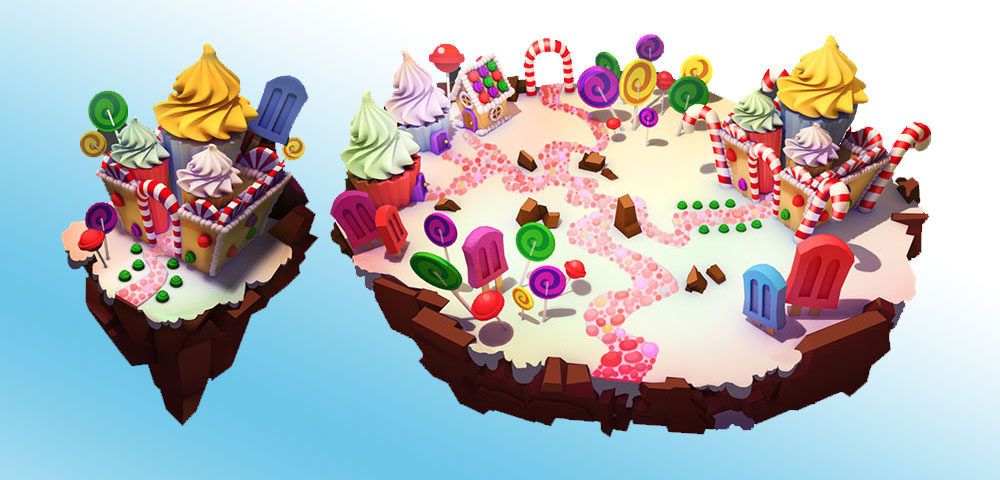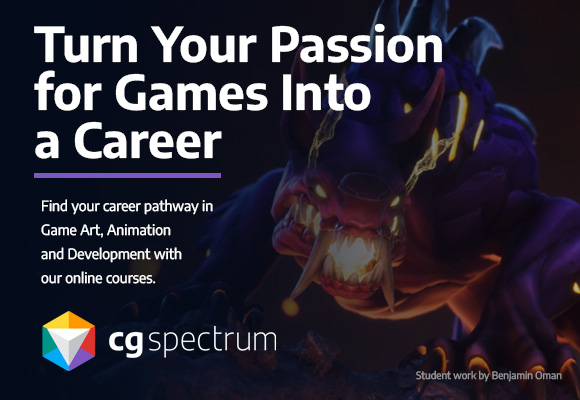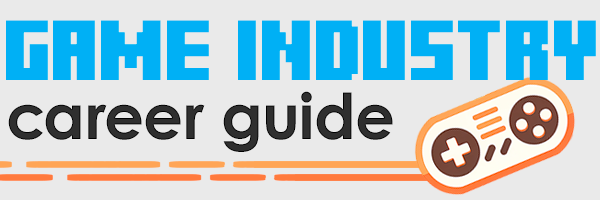Mobile Game Art Portfolio Example

When it comes to art, are you a generalist at heart? Do you sketch a little character work here, a little environment work there? A pop of visual effects here, a smattering of 3D modeling there? If so, the mobile video game industry might be your jam.
That’s according to Morgan Mulhall, a Seattle-area artist who has built her career in the realm of mobile games. Mobile studios run small, focused teams that demand — and reward — artists who have a broad skill set. From environments and lighting, to effects and modeling, mobile artists are expected to fill many roles on the art team. And Mulhall has done it all.

Mobile Game Art Portfolio Example
Conveying such a diverse skill set to potential employers can be challenging, but it’s mission-critical for landing a job in mobile games. Mulhall says building an online art portfolio is “the easiest, fastest, and best way to present your work to potential employers,” because anyone can view your work at any time. She says another advantage of building an online art portfolio is that you have full control over how your work is organized and displayed to viewers. “Having it be digital means they can look at it in high detail and exactly the way you wish to present it.”
 Mobile Game Art Portfolio Example
Mobile Game Art Portfolio ExampleArtist: Morgan Mulhall
Job: 2D/3D Mobile Game Artist
Portfolio: http://morganmulhall.com
More than just pretty pictures
When you have a diverse body of work, how do you decide which pieces to include in your online portfolio? That can be a tough decision. Mulhall’s art portfolio includes a range of art types, from modeling to animation to 2D sprite work, because it showcases her wide skill set and her willingness to fill multiple art roles on a project.
According to Mulhall, you have to decide which pieces are the highest quality, as well as represent what you do and what you’re looking to do in the future. “For me personally,” says Mulhall, “I chose pieces that show my charming art style because it’s what I have enjoyed doing and what I want to continue working on.”

Quality over quantity
When Mulhall was starting her career, she looked at the online art portfolios of professional artists for inspiration. What she found was a mountain of incredible pieces in each portfolio, giving the impression that more is better. But after working in the professional world, she quickly discovered that employers actually value quality more than quantity. “You don’t need to beef up the amount of work shown,” says Mulhall, because “the finish and skill of the work matters to employers,” not the number of pieces included. “You don’t need fifty models of unpolished assets. If you only have three polished pieces right now, then those are the three you show.”
But what about all those professional artists with massive online portfolios? As Mulhall came to understand, that amount of work results from many years of making assets, not from “chugging them all out as fast as possible.” According to Mulhall, you may collect a vast portfolio full of high-quality pieces someday, but that will come naturally — it shouldn’t be your goal.
Range and ability
According to Mulhall, your art portfolio can do more than just show off your specific work. If you include pieces that are diverse in style and content, it can convey your range of ability and show employers that you’re always exploring new skills and learning as much as possible about your craft. Mulhall says, “Do life drawing, do different styles of 3d models, try to show that you’re eager to learn.”
And if you’re always learning, that means you’ll need to keep your portfolio up to date as you develop new skills and create new art pieces. “It is something that as an artist you have to always consider,” says Mulhall, to “show you still know how to do the work and that you’re improving.”
Sweat the details
With all the focus on your artwork, don’t forget that your portfolio website’s design and layout is also important. We asked Mulhall for more advice on how you can build an online art portfolio that’s attractive and memorable, with the best chances at helping you land a job:
- Make sure your site’s look and layout don’t distract or detract from your showcased pieces.
- Keep your site well-organized and easy to navigate, so employers don’t accidentally miss something or have issues loading your images.
- Try to use your name or a clever nickname for your site, so employers will remember it — and will remember you and your work.
- Black is a very good background color to use. It makes your work stand out to the eye, and doesn’t clash with any colors in your pieces.
- Make your resume and contact information extremely easy to see and access. Mulhall put hers in the site header, so employers can download her resume and see all of her contact info from any page.
Beyond the portfolio
If you want to land a job as a professional artist, you’ll definitely need a strong art portfolio to showcase your skill. But there’s another skill you’ll need to develop in order to get hired: the skill of professional networking. According to Mulhall, artists starting the job hunt need to look everywhere and make all the networking connections you can. “Every job I’ve had, I got from knowing someone on the team, and they could vouch for me,” says Mulhall. “It makes a huge difference getting an okay from someone inside the company as opposed to being one of many faceless names applying.”
So don’t just build your online portfolio and expect the job offers to start rolling in. Get out there! Join an online message board, go to a local artist meetup, and exchange compliments or critique with other artists on online forums. The next artist you meet, might just be the one who helps you land your next job.
All images via Morgan Mulhall, www.morganmulhall.com
Read my new book!
Making games for a living is an incredibly rewarding career, but it’s hard to break in unless you have insider knowledge. This book levels the playing field.


Leave a Reply